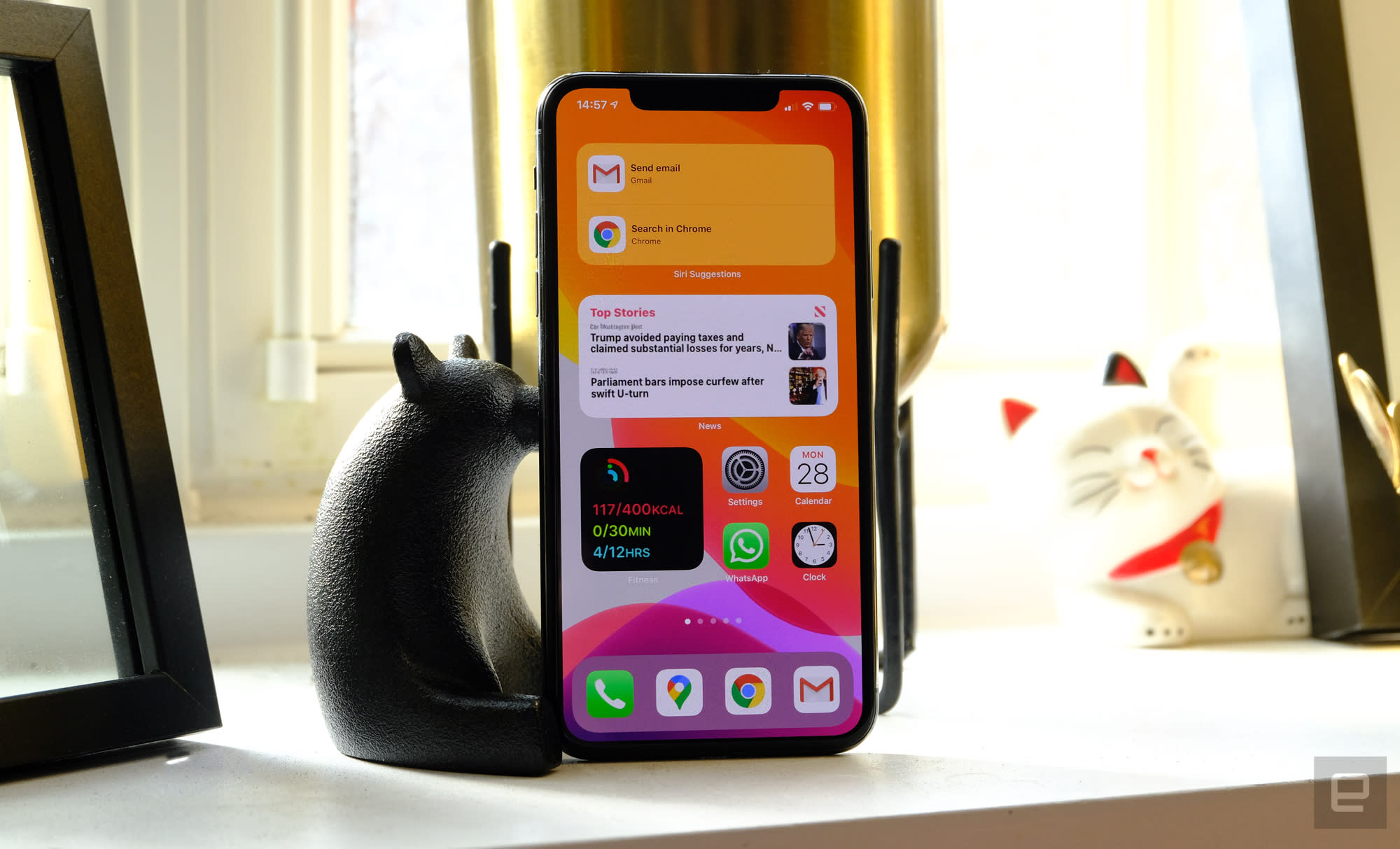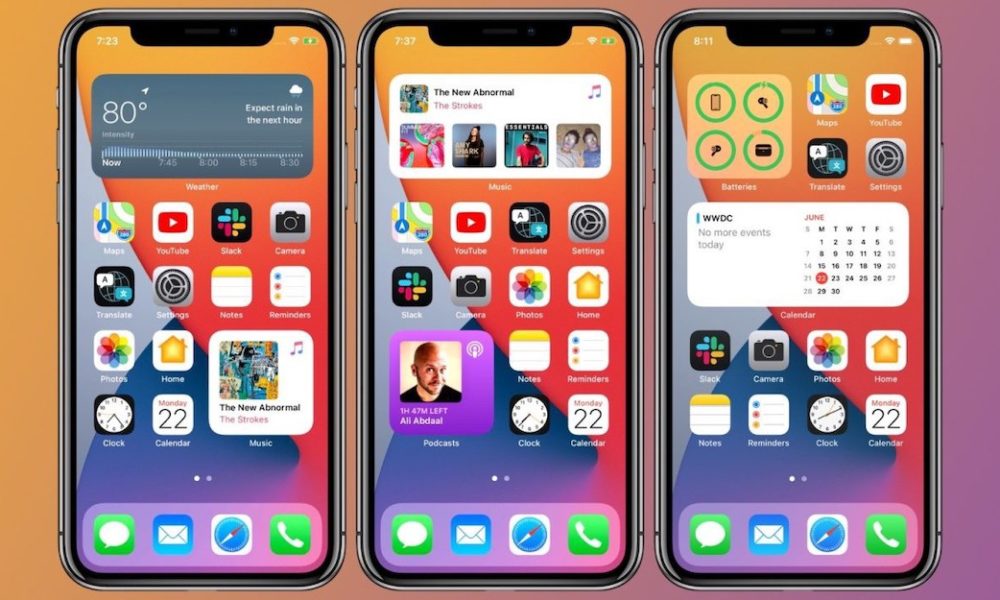- About iOS 14 Updates iOS 14 updates the core experience of iPhone with redesigned widgets on the Home Screen, a new way to automatically organize apps with the App Library, and a compact design for phone calls and Siri. Messages introduces pinned conversations and brings improvements to groups and Memoji.
- 10/21/20: We previously communicated that when using the 'Required' assignment type for apps on iOS 14 devices, apps are marked as non-removable. As communicated in MC224749, based on the customer feedback, iOS 14 apps deployed as 'Required' will become removable when the November update of Intune is released.
iOS 14 and iPadOS 14 make your iPhone, iPad, and iPod touch even more intelligent, more personal, and more private.
IOS 14 adds a new App Library view for organizing all of your apps. Launcher iOS 14 sets a new standard for the Android mobile operating system. It makes your phone better than before, more beautiful and luxury. And now it opens up to amazing possibilities for launcher on your phone. Lewdbot. With Launcher iOS 14, your phone is the most powerful. MAIN FEATURES: Dark Mode Launcher iOS 14 supports dark mode and light mode. The iPhone's software is getting a face-lift. The latest version of Apple's mobile operating system, iOS 14, is now available for download, and you'll notice several visual tweaks when you first.

Create a backup
Back up your device to iCloud or your computer so you have a copy of your important information.
Choose a backup methodInstall iOS 14 or iPadOS 14
Make sure your device is plugged in and connected to the Internet with Wi-Fi. Then follow these steps:
- Go to Settings > General > Software Update.
- Tap Download and Install.
Using an Apple Watch?
After you install iOS 14, you'll see a message on your Apple Watch to update to watchOS 7.
Update your Apple WatchNeed help?
Learn what to do if you need help updating your devices.
What's new in iOS and iPadOS
Read the full release notes for iOS 14 and iPadOS 14. Microsoft teams support number.
Ios 14.2 Should You Upgrade

Do more with iOS 14 and iPadOS 14.
To communicate with a Wi-Fi network, a device must identify itself to the network using a unique network address called a Media Access Control (MAC) address. If the device always uses the same Wi-Fi MAC address across all networks, network operators and other network observers can more easily relate that address to the device's network activity and location over time. This allows a kind of user tracking or profiling, and it applies to all devices on all Wi-Fi networks.
To improve privacy, iOS 14, iPadOS 14, and watchOS 7 use a different MAC address for each Wi-Fi network. This unique, static MAC address is your device's private Wi-Fi address, used for that network only.
Join Wi-Fi networks with a private address
Using a private address doesn't affect how you join or use most Wi-Fi networks. Simply connect to Wi-Fi like you normally would. For improved privacy, leave the Private Address setting on for all networks that support it.
If you erase all content and settings from your device, or you use the Reset Network Settings feature, your device will use a different private Wi-Fi address the next time it connects to the Wi-Fi network.
If you manage a Wi-Fi router that's configured to notify you when a new device joins the network, you'll be notified when a device first joins with a private address.

Turn private address off or on for a network
In some cases, a network might not allow devices with a private address to join, or the device can join but the network won't allow any further access. In such cases, you can choose to turn off the Private Address setting for that particular network.
To stop or resume using a private address with a specific Wi-Fi network:
iPhone, iPad, or iPod touch
- Open the Settings app, then tap Wi-Fi.
- Tap the information button next to a network.
- Tap to turn Private Address on or off. If your device joined the network without using a private address, a privacy warning explains why.
Iphone 14.3 Update
Apple Watch

Create a backup
Back up your device to iCloud or your computer so you have a copy of your important information.
Choose a backup methodInstall iOS 14 or iPadOS 14
Make sure your device is plugged in and connected to the Internet with Wi-Fi. Then follow these steps:
- Go to Settings > General > Software Update.
- Tap Download and Install.
Using an Apple Watch?
After you install iOS 14, you'll see a message on your Apple Watch to update to watchOS 7.
Update your Apple WatchNeed help?
Learn what to do if you need help updating your devices.
What's new in iOS and iPadOS
Read the full release notes for iOS 14 and iPadOS 14. Microsoft teams support number.
Ios 14.2 Should You Upgrade
Do more with iOS 14 and iPadOS 14.
To communicate with a Wi-Fi network, a device must identify itself to the network using a unique network address called a Media Access Control (MAC) address. If the device always uses the same Wi-Fi MAC address across all networks, network operators and other network observers can more easily relate that address to the device's network activity and location over time. This allows a kind of user tracking or profiling, and it applies to all devices on all Wi-Fi networks.
To improve privacy, iOS 14, iPadOS 14, and watchOS 7 use a different MAC address for each Wi-Fi network. This unique, static MAC address is your device's private Wi-Fi address, used for that network only.
Join Wi-Fi networks with a private address
Using a private address doesn't affect how you join or use most Wi-Fi networks. Simply connect to Wi-Fi like you normally would. For improved privacy, leave the Private Address setting on for all networks that support it.
If you erase all content and settings from your device, or you use the Reset Network Settings feature, your device will use a different private Wi-Fi address the next time it connects to the Wi-Fi network.
If you manage a Wi-Fi router that's configured to notify you when a new device joins the network, you'll be notified when a device first joins with a private address.
Turn private address off or on for a network
In some cases, a network might not allow devices with a private address to join, or the device can join but the network won't allow any further access. In such cases, you can choose to turn off the Private Address setting for that particular network.
To stop or resume using a private address with a specific Wi-Fi network:
iPhone, iPad, or iPod touch
- Open the Settings app, then tap Wi-Fi.
- Tap the information button next to a network.
- Tap to turn Private Address on or off. If your device joined the network without using a private address, a privacy warning explains why.
Iphone 14.3 Update
Apple Watch
Ios 14.4.1
- Open the Settings app, then tap Wi-Fi.
- Tap the name of the network you joined. If you haven't joined the network yet, swipe left on its name and tap more .
- Tap to turn Private Address on or off.
Ios 14.5.1
Additional info for enterprise network administrators
The Private Address option is on by default in iOS 14, iPadOS 14, and watchOS 7. Businesses and other organizations may need to update their Wi-Fi network security to work with private addresses. Otherwise, they may choose to turn off the Private Address setting for their Wi-Fi network via an MDM-defined network profile. Learn more about private Wi-Fi addresses and enterprise.

